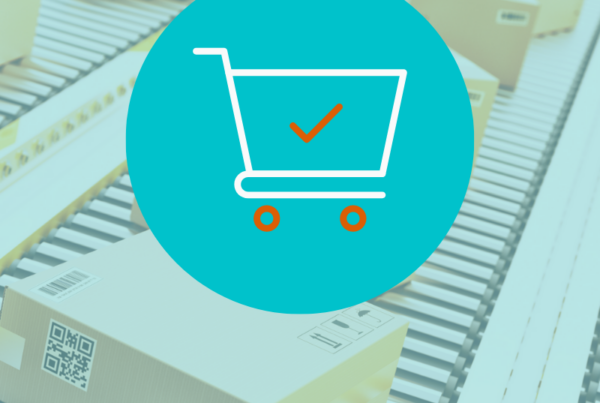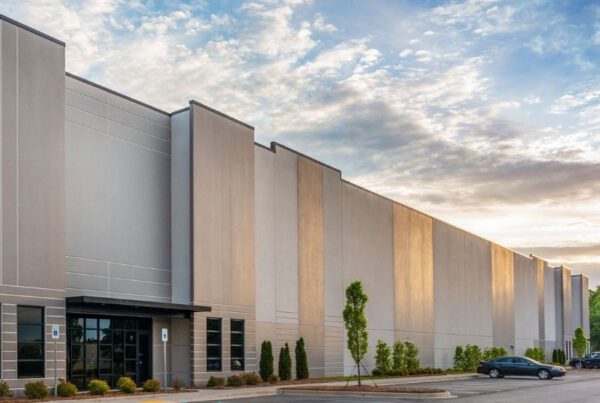Retailers recognize growing secondary market channels as opportunities to increase revenue and to become better stewards of the environment. Developing and executing a successful plan of engagement can be a challenge as it requires an intentionally designed reverse supply chain that is aligned with the company’s overall business strategy. Collaboration with third party logistics partners can help retailers gain the expertise, operations resources, and technology to navigate through the complexities and achieve results to strengthen their triple bottom line.
Landscape Leading to Increase in Secondary Market Activity
The pandemic’s prolonged bullwhip effect on global supply chains has led to inventory imbalance for many retailers. As consumers were beginning to adopt same day delivery expectations, they are now often left confused and frustrated asking questions like “Why do I have to wait to for three months for my new refrigerator to ship?” Along with many households becoming more cost sensitive, consumers are tired of dealing with uncertainty and feeling a lack of control. In addition to their order, they want options, and they want information.
As a result of demand spikes and instability, retailers and shippers are building more resiliency into their supply chains and increasing inventory levels to secure customer loyalty by minimizing the risk of lost sales from out of stock products. As a result, increased inventory levels are likely to lead to an increase in overstock goods. This combined with the escalating volume of returns that come with the rise of eCommerce orders will bring a surge of products to secondary retail markets.1
The escalation of U.S. Secondary Markets began prior to the pandemic. In 2019, the size of secondary markets in the U.S. was approximately $631 billion, which is greater than the amount spent on ecommerce in the U.S. in the same year. In 2019, U.S. secondary markets grew to approximately equivalent to 3% of GDP.1
There is no denying opportunity exists, so why have many companies hesitated to fully embrace secondary market channels?
One reason retailers have historically been wary of selling through secondary markets is centered around concerns of cannibalization and potentially devaluing their brand. Will our customers continue to pay full retail price for a luxury handbag if they can get it cheaper at a value store like T.J. Maxx or Overstock.com? But, the reality is a company’s product could still easily be sold in alternative secondary market channels by a different seller. In this case the original retailer is forfeiting additional revenue and control over the quality of their product. With increasing customer expectations around ESG (Environmental, Social, Governance) practices2 and the rise of cancel culture, a brand’s reputation would be placed at risk if it still relied on the old school method of using landfills to make room for next season’s inventory. As stated in the 2021 25th Annual Third-Party Logistics Study, “Circular supply chains will become a common theme of supply chain initiatives in the next decade as they move away from the linear basis of ‘take me and throw away’ to reclaim and re-use what was once deemed a waste of their own product.” 3
Probably the most common reason retailers struggle to embrace and successfully leverage secondary markets is simply, complexity. The ability to make this a profitable endeavor is a function of having a very intentional reverse logistics strategy that is designed in support of the overall business strategy. The product mix, sales channels, seasonality, returns policies, vendor agreements and a host of other variables are inputs to consider when deciding which secondary market channels to leverage and how to manage the execution so value is created for the multiple stakeholders across the reverse supply chain.
Optimizing processes to prepare returned products to be sold in secondary markets is a balance of speed, cost, and adding value for your buyers. There is not a one size fits all solution. While some retailers take a more transactional approach and prioritize minimizing costs, others are positioning themselves more strategically to capitalize on the growing opportunities.
Case Study
Sunland Logistics Solutions is a growing third party logistics company specializing in managing returns for a variety of large scale retailers across multiple industry verticals. While some of their more brand conscious customers are still wary of selling products in secondary markets, a couple of the Fortune 50 retailers Sunland supports are capitalizing on selling liquidation inventory on online auction marketplaces.
Here is an example case where a Fortune 50 retailer gained more value from their inventory liquidation after establishing a strategic 3PL partnership to create an advanced sortation center.
The omni-channel retailer had their reverse supply chain built around a Central Returns Distribution Center that received unwanted items from customers who were either returning products to one of their 1,800+ stores in the U.S. or by way of parcel shipment. From there, they were selling truckloads of mixed return products through a bid auction. Although this process minimized logistics costs, it was not an optimal solution. The lack of product sortation caused the truckload bid prices to be undervalued.
Does the cost of the logistics support and returns processing justify the revenue recovered to sort it? This was the question the retailer and their shipping partner set out to answer when they connected with Sunland Logistics Solutions to help develop and manage a returns sortation solution. After a collaborative process to fully understand the needs and requirements for all stakeholders, Sunland’s team provided both the operations design expertise and a customizable returns system solution to help drive efficiencies in the process and provide valuable real-time data visibility to the retailer.
An 80,000 SF returns sortation operation was launched where mixed pallets are received by the truckload from the retailer’s centralized returns distributions center and returned products are sorted into 1 of 10 categories, i.e. Home goods, Toys, Apparel, Kitchen, Seasonal, etc. The condition of the product is also assessed by Sunland’s team and is dispositioned as either Grade A or Grade B to determine if the product is able to be resold based on the retailer’s specified qualifications.
The customized returns management system was designed to meet the customer’s requirements, provide enhanced real-time visibility with productivity benchmarks, and optimize the user experience for the Customer Service Representative (CSR) processing the returns to help drive efficiency.
The sorted products are listed by category either as a Truckload (TL) or Less-than-Truck-Load (LTL) on the secondary marketplace. The auctions are open for 3-4 days a week and the products are sold to the buyer with the highest bid.
After the first year of launching the sortation center, the retailer gained the following:
- Improved product information for pallet contents
- Increase in product value for secondary markets
- Increased on-time delivery to customers
- Increased revenue on seasonal products by leveraging holiday markets
- Real-time visibility & performance metrics
In this retailer’s case, the average sale price increases when more specific classification information is provided to the buyer. The Sunland’s team is currently working on a new material handling automation solution that sorts the like products based on UPC codes. The system will determine if the value of processing an item offsets the cost of scrapping based on product value and will automate the decision of whether the item should be packaged in a carton or on a pallet. The solution is designed to increase the velocity and intelligence of the operation; enable a more specific classification system that will successfully support auctioning smaller quantity purchases; and grow secondary market revenues while controlling labor costs for the retailer.
Conclusion:
To stay competitive retailers can no longer postpone innovations to enhance their returns management and reverse logistics processes. Those who have already been investing in modernizing their forward and reverse supply chains have a head start. Now is the time to implement advanced technologies, create partnerships, and explore opportunities in secondary retail markets. Collaboration with third party logistics partners can help retailers gain the expertise, operations resources, and technology to navigate through the complexities and achieve results to strengthen their triple bottom line.
References
- “The Importance of Secondary Markets in the Changing Retail Landscape: A Longitudinal Study in the U.S. and China.” (Rogers, Rogers, Chen)
- 2022 3PL Study
- 2021 Third-Party Logistics Study: The State of Logistics Outsourcing








